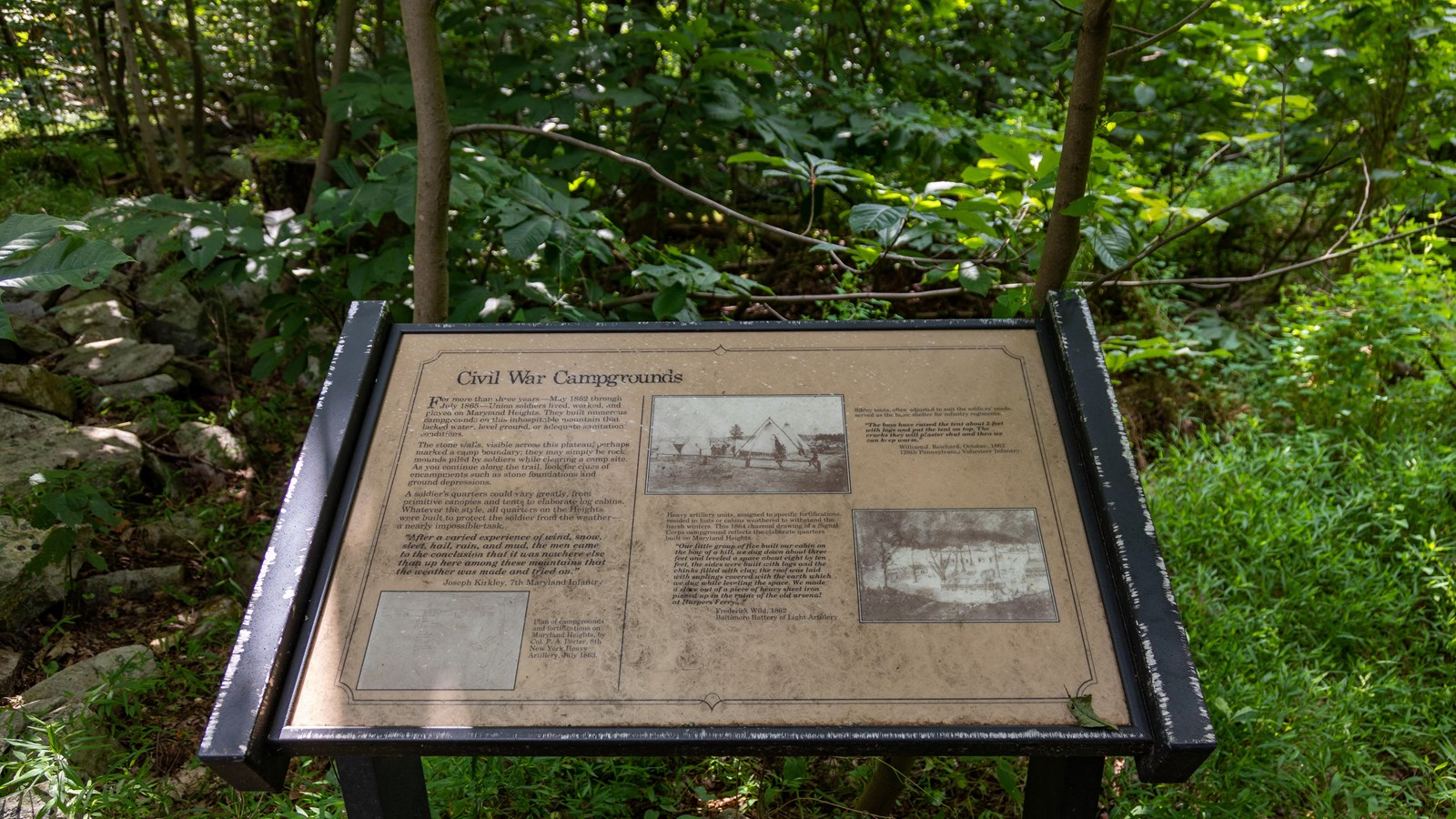Last updated: January 27, 2023
Place
Information Panel: Civil War Campgrounds

NPS / Claire Hassler
Historical/Interpretive Information/Exhibits
For more than three years - May 1862 through July 1865 - Union soldiers lived, worked, and played on Maryland Heights. They built numerous campgrounds on this inhospitable mountain that lacked water, level ground, or adequate sanitation conditions.
The stone walls, visible across this plateau, perhaps marked a camp boundary; they may simply be rock mounds piled by soldiers while clearing a camp site. As soon as you continue along the trail, look for clues of encampments such as stone foundations and ground depressions.
A soldier's quarters could vary greatly, from primitive canopies and tents to elaborate log cabins. Whatever the style, all quarters on the Heights were built to protect the soldier from the weather - a nearly impossible task.
"After a varied experience of wind, snow, sleet, hail, rain, and mud, the men came to the conclusion that it was nowhere else than up here among these mountains that the weather was made and tried on." Joseph Kirkley, 7th Maryland Infantry
Photo Caption: Sibley tents, often adjusted to suit the soldiers' needs, served as the basic shelter for infantry regiments. "The boys have raised the tent about 2 feet with logs and put the tent on top. The cracks they will plaster shut and then we can keep warm." William J. Reichard, October 1862, 128th Pennsylvania Volunteer Infantry
Photo Caption: Heavy Artillery units, assigned to specific fortifications, resided in huts or cabins weathered to withstand the harsh winters. This 1864 charcoal drawing of a Signal Corps campground reflects the elaborate quarters built on Maryland Heights.
"Our little group of five built our cabin on the bow of a hill, we dug down about three feet and leveled a space about eight by ten feet, the sides were built with logs and the chinks filled with clay; the roof was laid with saplings covered with the earth which we dug while leveling the space. We made a stove out of a piece of heavy sheet iron, picked up in the ruins of the old arsenal at Harpers Ferry..." Frederick Wild, 1862, Baltimore Battery of Light Artillery
